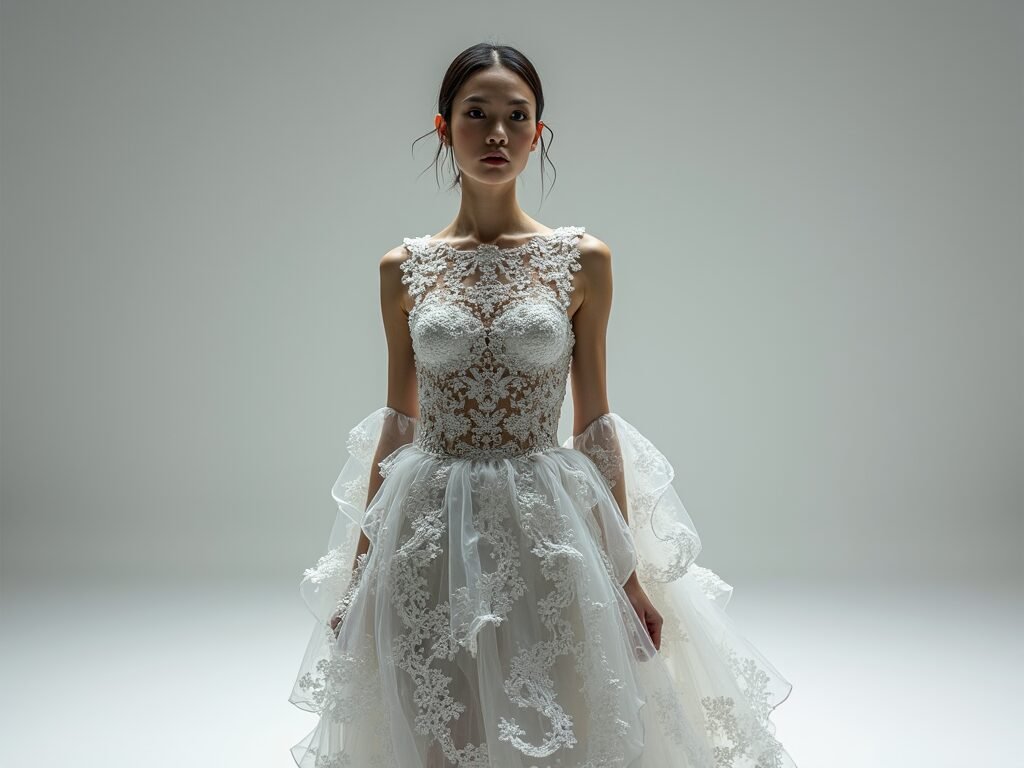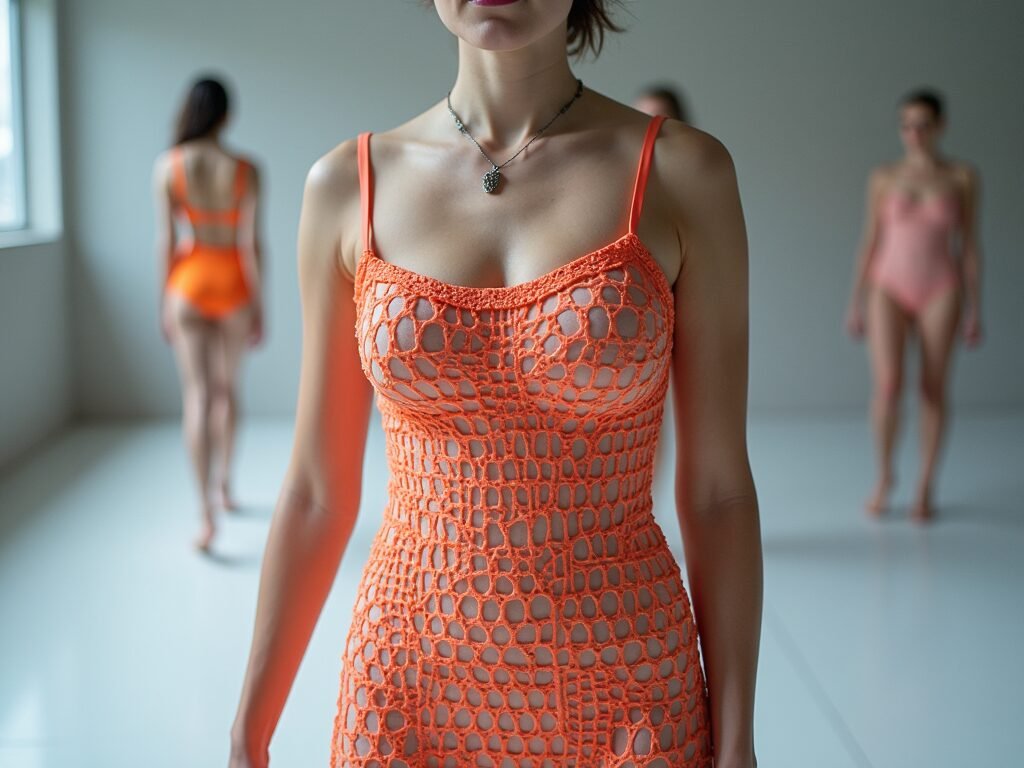3D Printed Fashion Revolutionizes Design Beyond Fabric

Have you ever pondered how the future of fashion might look? Imagine clothing that feels like an extension of your skin, fits you perfectly, and is eco-friendly to boot. Welcome to the world of 3D printed fashion—where design meets innovation beyond the fabric.
The Rise of 3D Printing in Fashion
The fashion industry is no stranger to evolution. From hand-stitched garments to mass production, the way we create and consume fashion has constantly evolved. Enter 3D printing—a technology initially used for prototypes and models, now revolutionizing how we think about design and sustainability in fashion.
What is 3D Printed Fashion?
In simple terms, 3D printed fashion involves creating garments using a 3D printer. Instead of fabric, designers use materials like nylon, TPU (thermoplastic polyurethane), and other polymers. The result? Intricate, customizable designs that wouldn’t be possible with traditional methods.
Why 3D Printed Fashion Matters
Why should you care about this futuristic-sounding technology? For starters, 3D printing allows for unparalleled creativity and customization. Designers can create complex patterns and structures that were once impossible. Plus, it’s a more sustainable option, reducing waste and allowing for on-demand production.
Exploring the Benefits of 3D Printed Fashion
Customization Like Never Before
Imagine owning a garment that fits you perfectly, down to the millimeter. With 3D printing, this isn’t just a dream. Designers can scan your body measurements and create pieces tailored specifically for you. This level of customization was previously reserved for high-end couture but is now becoming more accessible.
But it’s not just about fit. 3D printing allows for personalization in other ways too. From unique patterns to incorporating your favorite colors, the possibilities are endless. This technology is making fashion more inclusive, catering to diverse body types and personal styles.
You might be interested: The Future of Fashion is Personalized with AI-Powered Stylists
Sustainability and Eco-Friendliness
You might be wondering, “How is 3D printing more sustainable?” Traditional fashion production often results in significant waste. Excess fabric, unsold stock, and the energy-intensive nature of manufacturing all take a toll on the environment. In contrast, 3D printing is a form of additive manufacturing, meaning materials are added layer by layer, resulting in minimal waste.
Additionally, many 3D printed garments can be recycled or repurposed. As the fashion industry grapples with its environmental impact, 3D printing offers a promising solution. It’s a step towards a more circular economy, where products are designed with their end-of-life in mind.
Speed and Efficiency in Production
Gone are the days when creating a new garment would take weeks or even months. With 3D printing, once a design is finalized, it can be produced in a matter of hours. This speed doesn’t just benefit designers; it means you can get your hands on the latest trends faster than ever before.
This efficiency also allows for more experimentation. Designers can quickly iterate on their ideas, trying out new concepts without the lengthy processes of traditional manufacturing. This leads to more innovation and creativity in the fashion world.
You might be interested: The Celebrity Style Icons Shaping Fashion This Year

Real-World Applications of 3D Printed Fashion
Haute Couture Meets High Tech
High fashion has always been about pushing boundaries, and 3D printing is no exception. Designers like Iris van Herpen have made headlines with their 3D printed haute couture pieces. These garments are not just clothing; they are works of art, showcasing the limitless possibilities of this technology.
Everyday Wear and Accessible Fashion
While haute couture often grabs the spotlight, 3D printed fashion is making its way into everyday wear too. Brands like Adidas have introduced sneakers with 3D printed soles, offering enhanced performance and comfort. This blend of practicality and innovation is making 3D printed fashion more accessible to the average consumer.
Costume Design and Special Effects
Beyond the runway, 3D printing is making waves in costume design and special effects. Movies, theater, and even theme parks are utilizing this technology to create intricate costumes and props. The precision and detail achievable with 3D printing make it ideal for creating fantastical, otherworldly designs.
How to Integrate 3D Printed Pieces into Your Wardrobe
Start Small with Accessories
If you’re new to 3D printed fashion, start with accessories. Jewelry, belts, and even handbags can be 3D printed. These pieces can add a unique flair to your outfits without committing to a full garment.
Mix and Match with Traditional Pieces
One of the beauties of 3D printed fashion is its versatility. You don’t need to overhaul your entire wardrobe. Instead, mix and match 3D printed items with your existing clothes. A 3D printed top paired with your favorite jeans can create a striking look.
Be Bold and Experiment
Don’t be afraid to experiment! 3D printed fashion is still a relatively new frontier, and there’s plenty of room for creativity. Try out different styles, patterns, and textures. The fashion world is your oyster.
The Future of 3D Printed Fashion
Continued Innovation and Technological Advancements
The future of 3D printed fashion looks bright. As technology continues to advance, we can expect even more innovative designs and materials. From biodegradable polymers to smart textiles that can change color, the possibilities are endless.
Mainstream Adoption and Accessibility
While 3D printed fashion is still niche, it’s slowly making its way into the mainstream. As production costs decrease and techniques improve, we can expect to see more 3D printed garments in stores. This shift will make this innovative fashion more accessible to a broader audience.
A Step Towards a Sustainable Fashion Industry
Sustainability is a critical concern for the fashion industry. With its potential to reduce waste and promote circular fashion, 3D printing could be a game-changer. By supporting brands that prioritize sustainability, we can all contribute to a healthier planet.
Conclusion
3D printed fashion is not just a passing trend—it’s a revolutionary approach to design and production. From unparalleled customization to significant sustainability benefits, this technology is reshaping the fashion landscape. Whether you’re a fashion enthusiast or someone looking to make more mindful choices, 3D printed fashion offers something for everyone. For more tips and insights follow ScopeStyle.
FAQs
What materials are used in 3D printed fashion?
Common materials include nylon, TPU, and other polymers. These materials are chosen for their flexibility, durability, and suitability for creating detailed designs.
How sustainable is 3D printed fashion?
3D printing is more sustainable than traditional methods due to its additive process, which minimizes waste. Additionally, many 3D printed garments can be recycled or repurposed.
Can I wash 3D printed clothes?
Yes, but it’s essential to follow specific care instructions. Some materials may require gentle washing or handwashing to maintain their integrity.
Are 3D printed garments comfortable to wear?
Absolutely. Advances in materials and design techniques have made 3D printed garments as comfortable as traditional fabrics. Plus, the customization options ensure a perfect fit.
How can I start incorporating 3D printed fashion into my wardrobe?
Begin with accessories like jewelry and handbags. These items can add a unique touch to your outfits without requiring a full wardrobe overhaul.
















